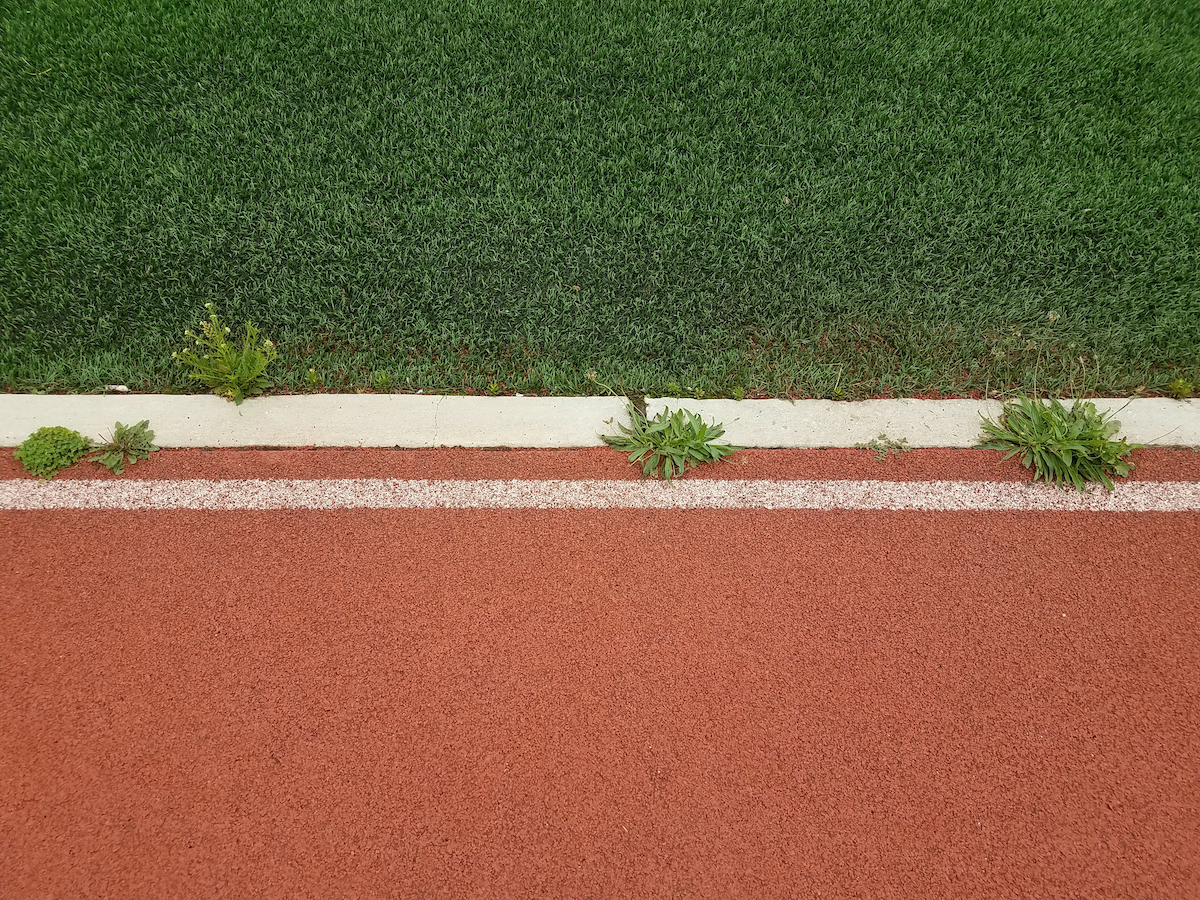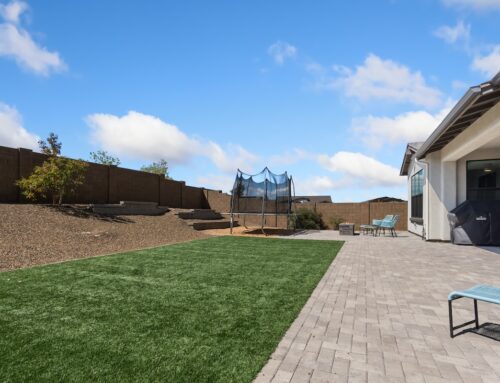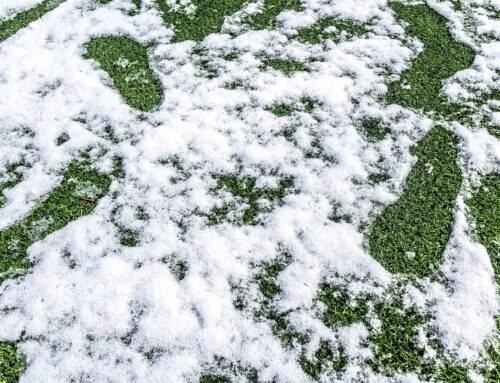Last Updated on May 25, 2023 by ReTurf
Waging a constant war with weeds has been the bane of every green thumb’s existence. There you are, enjoying the aesthetic appeal of your perfectly manicured lawn, and then you spot it—a stray weed audaciously peeking through.
Now, imagine a world where this incessant battle is a thing of the past. Welcome to the realm of artificial turf.
Amidst all its benefits, synthetic grass does beg the question: Can weeds—Mother Nature’s most tenacious invaders—still grow even in artificial turf?
The answer is yes. Although rare, compared to how weeds pierce through natural grass lawns like needles through a well-used pincushion, they can still creep up with an artificial grass installation (especially if a necessary weed barrier was not put in place during the installation).
That is… Unless we have a strategy in place to prevent this.
Persistent species have been known to pierce through asphalt and concrete; so synthetic grass is no exception. Naturally then, a common concern surrounding artificial turf installations is weed growth So, the question is: do weeds grow through artificial turf, and do you need to install a weed block under the turf?
Here’s what you need to know about installing weed barriers beneath artificial turf:
Weeds & Artificial Turf: What’s the Connection?
Artificial turf presents many benefits over traditional grass, one of which is its innate resistance to weed growth. Unlike natural lawns, which can provide extremely fertile ground for weeds to sprout and thrive, artificial grass is inherently less prone to this issue. However, it doesn’t render synthetic turf entirely immune to weed invasion.
Just like weeds are known to force their way through cracks in pavement and concrete walkways, persistent and aggressive species might find a route to the surface, breaching through the synthetic grass. Therefore, it’s crucial to prevent this from the outset, both through proper installation (including clearing weeds underground) and using a reliable method such as a weed barrier.
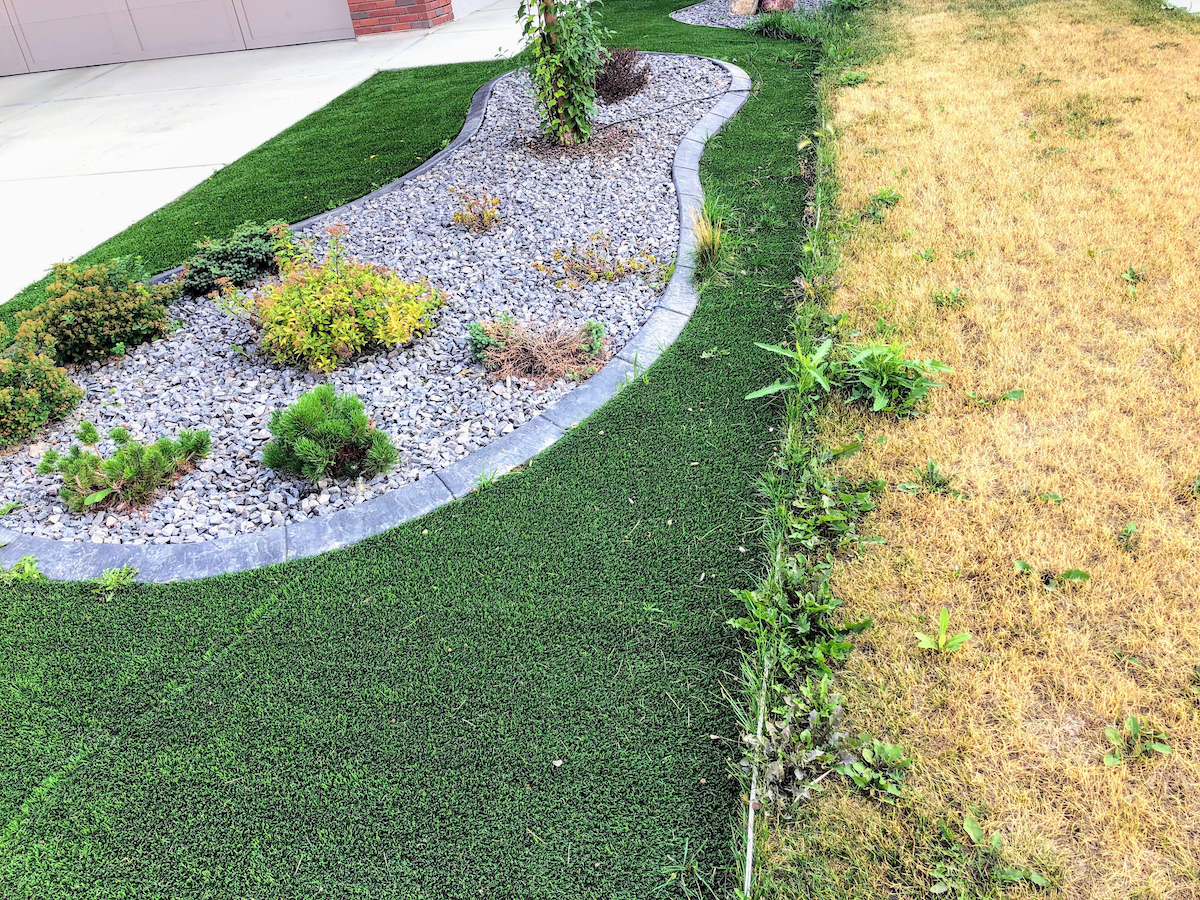
It is likely that in the photo above, the observed weed growth around the edges of the artificial turf is due to a few key factors that can be easily addressed:
- The underlying issue could be inadequate preparation before the turf was installed. It’s essential that all existing weeds and roots are thoroughly removed from the soil prior to installation. This step might have been overlooked or not completed thoroughly in the scenario depicted above, leading to the persistent weeds finding their way up and around the edges.
- The presence of so many weeds could indicate that a weed barrier was not used during the installation process. This protective layer serves as an added defense against potential weed growth, and its absence would naturally make the turf more susceptible to weeds.
- Cracks or spaces in the nearby concrete and rock landscaping might have provided an opportunity for weed growth. Certain weeds are notorious for their tenacity, often growing in the smallest of spaces—especially around the edges of hardscapes such as sidewalks, patios, driveways, and pool decks.
It’s important to emphasize that this shouldn’t really be worrying if you’re considering installing artificial turf; the weed growth in this photo simply underlines the importance of correct ground preparation and installation techniques. It highlights the necessity of installing a quality weed barrier underneath the turf, ensuring weed roots are thoroughly eradicated before laying your turf, and paying special attention to areas near hardscapes.
(Of course, it’s hard to ignore that even with the temporary hiccup of weed growth around the edges, the artificial turf lawn still steals the show compared to the lifeless, yellowed natural grass lawn next door!)
The Role of Weed Barriers in Artificial Turf Installation
When installing artificial turf, professionals use a multi-step process designed to reduce the chances of weed growth:
- Clearing the Area – This involves removing visible weeds on the surface.
- Spraying Herbicides – Application of weed killer or herbicides helps in eradicating present weeds and seeds within the soil.
- Creating a Compacted Base – This base layer underneath the turf acts as an additional barrier against weed growth.
- Installing a Weed Barrier Fabric – This is an extra step taken to block any remaining weed roots from reaching the surface.
This four-step process is typically enough to keep most lawns weed-free. However, because it can be challenging to eliminate all weed root systems already in the soil, a tiny chance of weed sprouting exists.
The Importance of Installing Weed Barriers
The lack of a weed barrier can lead to weed growth through your artificial turf, compromising its appearance and durability. It creates a relentless cycle of removing unsightly weeds, which can be quite laborious. Thus, to maintain a pristine lawn without the burden of constant weed removal, installing a weed blocker under your artificial turf is highly advisable.
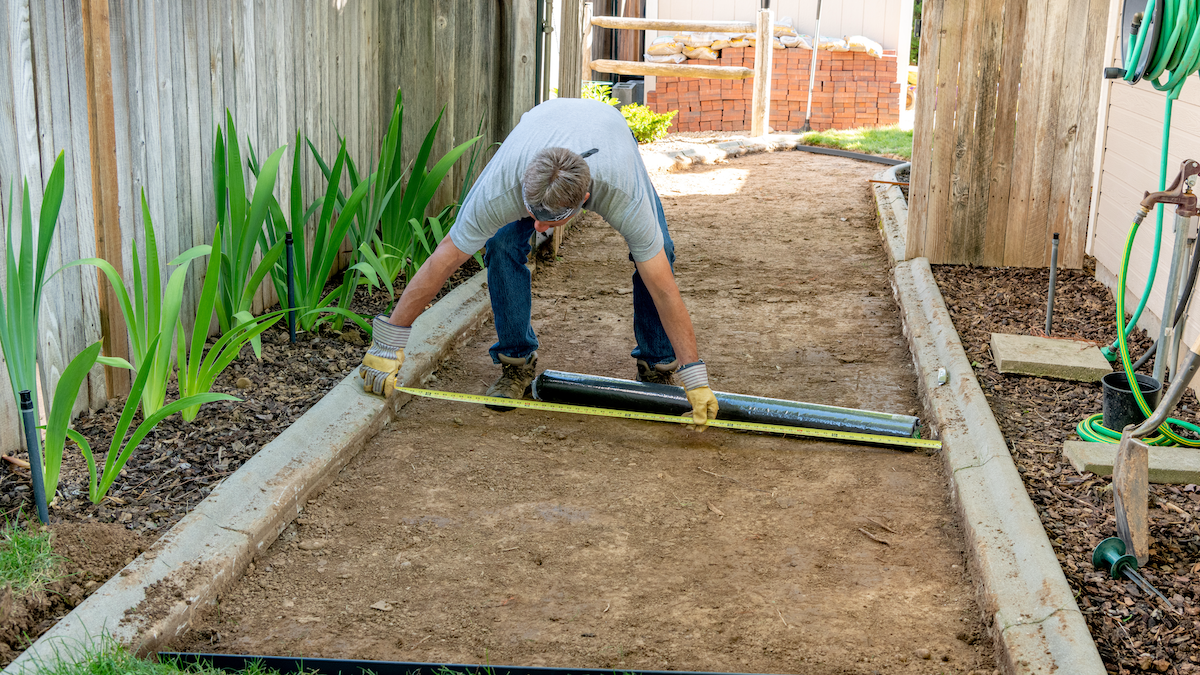
As someone who’s spent countless hours perfecting the look of my lawn, let me share a bit of personal wisdom: There’s nothing more disheartening than finding a stubborn weed poking through the turf that you’ve invested your time, money, and energy into. What was meant to be a backyard sanctuary of low-maintenance greenery suddenly becomes a battlefield against unwanted intruders. For this reason, the extra step of installing weed barriers has saved me from many a headache.
When it comes to the edges of your turf, or any areas abutting hardscapes like concrete, these potential problem areas need special attention. In my experience, leaving these spots unchecked is akin to opening a VIP entrance for weeds. You may think it’s a minor detail—until you spot that first unwanted green sprout.
So, it’s best to either temporarily remove hardscapes before your artificial turf is installed so any weeds beneath them can be dealt with. Or, if this is impractical, make sure any cracks/crevices are properly filled to prevent weed growth around the edges of your artificial turf.
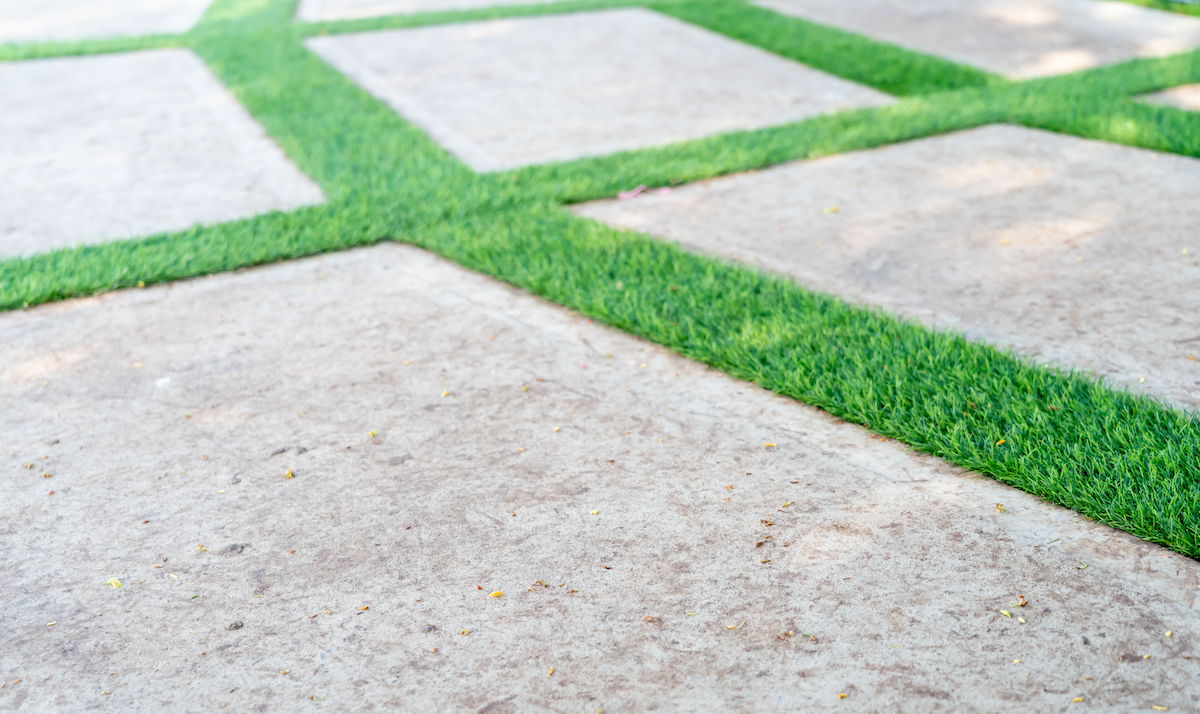
The photo above perfectly illustrates how this attention to detail pays off. The image showcases the perfect intersections of synthetic grass and concrete pavers, all the edges cleanly delineated and entirely weed-free. This isn’t just about the aesthetics—though, indeed, the luxurious, modern look of artificial turf between pavers is a sight to behold—but it’s also a testament to proper installation.
The surface underneath those pavers was thoroughly cleared of any weeds or roots before the artificial turf was installed. Similarly, the perimeter of the turf was secured with weed barriers to stave off any invasive plant growth. It’s these seemingly small steps that make a significant difference in maintaining a pristine, weed-free artificial lawn for years to come. Achieving this level of perfection in your own lawn is absolutely achievable.
Dealing with Weed Growth in Synthetic Turf
Despite these preventive measures, if weed growth does occur, it can be handled quite simply. A hand-weeding tool or weed killer spray can be used to remove the unwanted vegetation without damaging the synthetic grass. Of course common sense dictates that these actions be taken with care.
- While high-quality/professional-grade artificial turf is robust and designed for longevity, it’s not designed to be “bulletproof.” So before using a hand-weeding tool, make sure you will not puncture or cut your synthetic grass by using it.
- Just as with pesticides, choose any herbicides/weed-killing sprays judiciously, ensuring that they are safe for use on artificial turf and won’t cause any discoloration or degradation over time.
It’s crucial to act swiftly upon noticing weed growth to prevent it from spreading.
The Bottom Line
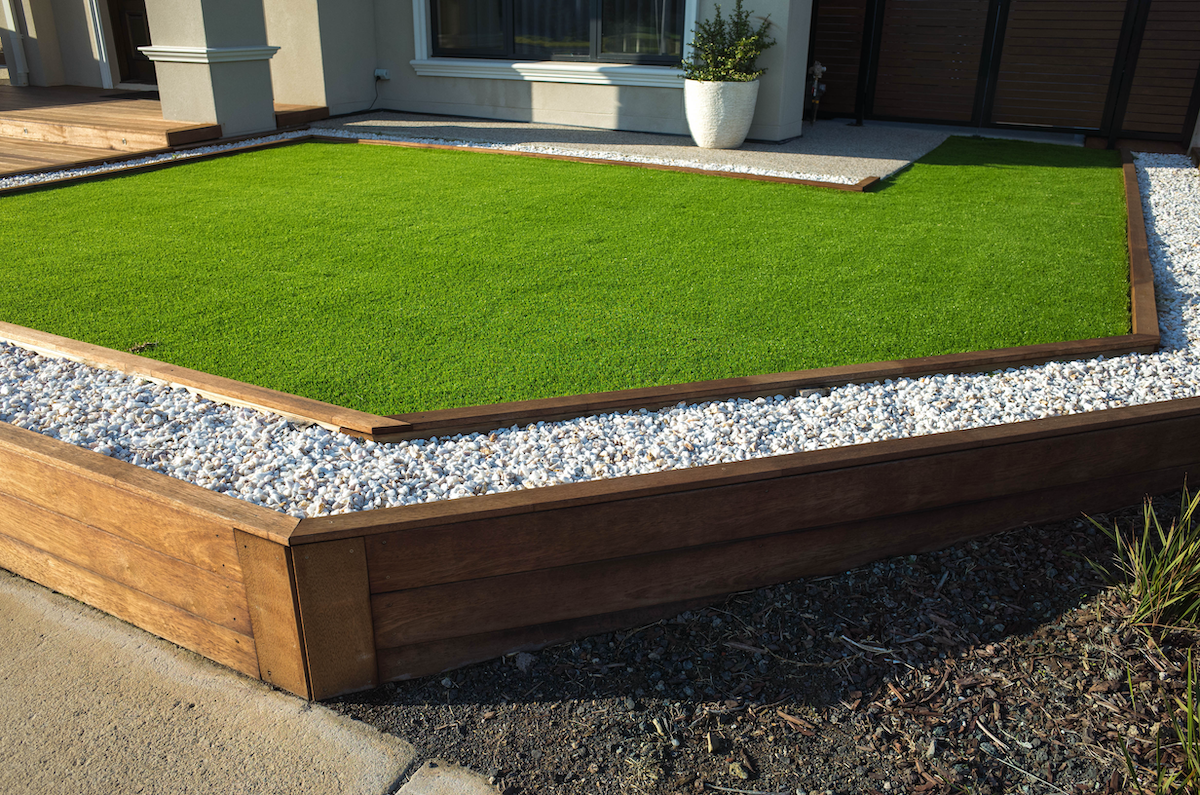
Artificial turf offers long-lasting beauty with minimal maintenance. But to preserve its lush, weed-free appeal, preventive measures like weed barriers are essential during installation.
If installed correctly, using industry-best practices, artificial turf can stay weed-free for many years. Imagine enjoying a perfect, lush, green lawn that looks manicured year-round without the hassle of pulling out weeds or mowing.
ReTURF – Your Artificial Turf Experts
If you have any concerns or need assistance with a project, know that expert guidance is just a phone call or email away. The expert team at ReTURF stands ready to tackle any queries or concerns that might arise. Our team of experienced professionals excels at project planning—ensuring your installation process is a smooth one.
Don’t let any doubt or uncertainty stand in the way of achieving your dream lawn. Reach out to ReTURF at (828) 518-5787 or click here to connect with us via email!

